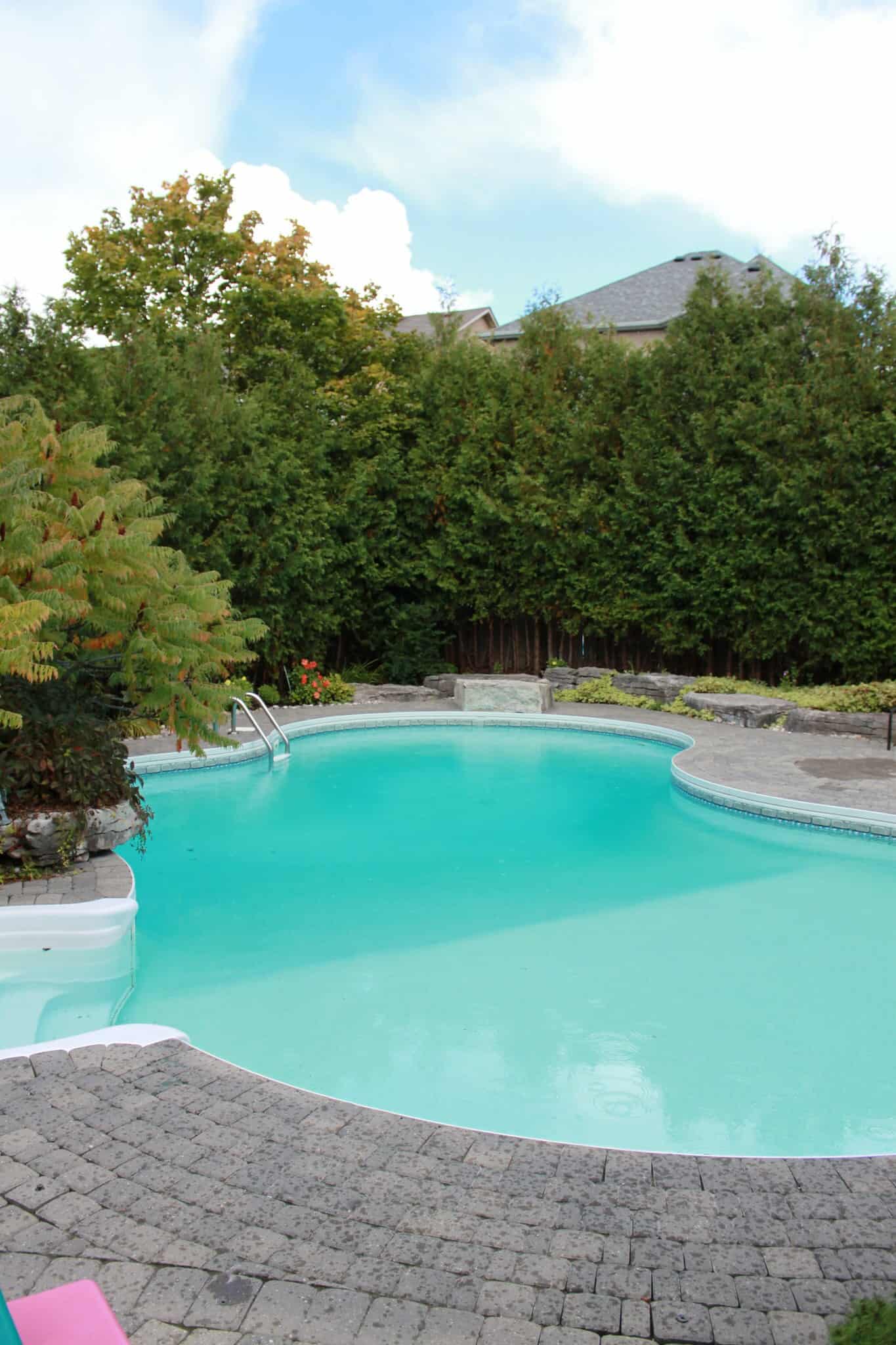One myth about salt water pools is that they don’t contain chlorine. In fact, salt water pools do contain chlorine but rather than you manually adding it to the water, another process exists.
A salt water pool system disinfects water by using a salt chlorinator and salt cell to convert regular NaCl to chlorine. Dissolved salt in the water passes over electrified metal plates inside the cell to produce chlorine through the process of electrolysis with the pump running.
Chlorinated water is then returned to the pool for swimming so it’s the chlorine in the water that kills germs and bacteria, chlorine produced initially from regular salt.
Please read on for a visual description of how the salt water pool chlorination system works.
Salt water chlorination system

The salt chlorination system is normally made up of several parts:
- The chlorinator system itself which is the brains of the operation that manages various aspects of the pool. Depending on how sophisticated your chosen model, it can control your chlorine production, pump, pool heater, lights and other things while also alerting you to low salt levels and measuring water temperature.
- A water flow sensor which ensures there is always an adequate water supply running through the system.
- The salt cell which is built into the existing piping that actually converts salt to chlorine. We’ll talk more about that in the next section.
The above photo shows a typical salt water pool system. Your pool might not have all the same parts but the gist of a salt water pool system is this:
- Regular salt is added to pool water in the appropriate amount. The salt level is normally kept in the 2700 ppm – 3400 ppm (parts per million) range.
- Once the salt has dissolved, it passes through the pump into the salt cell which contains a series of titanium plates that are electrified.
- The electrical current inside the salt cell converts the dissolved salt to chlorine to disinfect the pool.
- The newly chlorinated water is returned back to the pool for swimming.
The salt chlorination system only operates when the pump is running and the system only produces chlorine according to the setting. If you have the chlorinator setting on 60%, it means that chlorine will be produced 60% of the time that the pump is running.
If you need to produce more or less chlorine, you can adjust the pump’s running time up or down or you can adjust the chlorinator setting up or down, or do a combination of both.
Let’s take a closer look at the actual part of the system that converts dissolved salt to chlorine: the salt cell.
Salt water chlorination salt cell

The salt cell is a hard plastic tube that screws into the existing pool piping. When water is pumped through the system, it passed through the salt cell.
When the salt cell is active and electrified, the dissolved salt in the water passes over the titanium plates inside the cell which converts the salt to a form of chlorine. The water is then returned to the pool clean and chlorinated.
It’s the chlorine in your water that kills germs and bacteria and keeps it clean for swimming. As chlorine is used up to kill germs, more chlorine is produced by the chlorinator and the process continues.
Salt does not evaporate but does to need to be replaced and replenished every so often for several reasons. It’s important to keep your salt level in the correct range so that your system can properly produce enough chlorine for your pool.
Summary
The salt that is added to a salt water pool is converted to liquid chlorine by way of a salt chlorination system. This is the main difference between a regular pool with chlorine and a salt water one: The chlorination system manages the creation of chlorine to disinfect the water to keep it clean and sanitary for swimming.
Adding salt to a pool without a salt chlorination system won’t do anything because salt on its own doesn’t sanitize water. It’s the electrolysis process that occurs inside the salt cell of the chlorination system that converts salt to chlorine.


